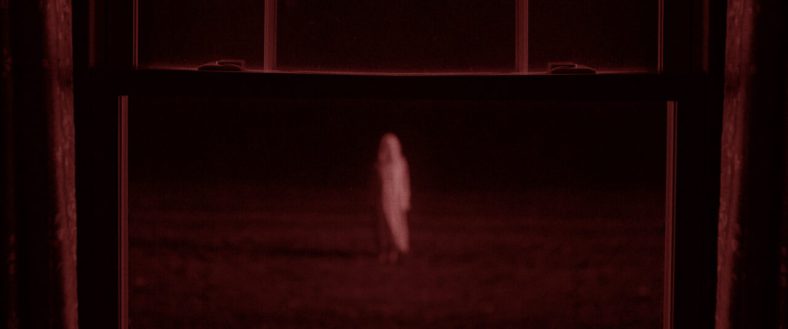“Emptiness” is a Red-Tinted Nightmare [Fantasia 2023 Review]

Director Onur Karaman’s (Là Où Atilla Passe, Respire) Emptiness, which had its world premiere at this year’s Fantasia Festival, is the latest in a long line of experimental, liminal features that prioritize mood over substance. Clear parallels can be drawn between Karaman’s work here and contemporary maestro of the form, Osgood Perkins. Stylistically, Karaman draws from the likes of Roman Polanski’s Repulsion and Mark O’Brien’s recent The Righteous, both monochromatic melodramas trading in psychosis, paranoia, and atmospheric horror. Stylistically, Emptiness is a close match, though its taut narrative soon unravels, leaving stunning visuals and little depth in its wake.
Suzanne’s (Stephanie Breton) husband has disappeared, and in the wake of her fruitless search, two guardians (Julie Trépanier and Anana Rydvald) arrive. These women shift between helpfulness and cryptic antagonism, barring Suzanne from leaving the home, especially when it comes to the barn outside. Paranoia takes root, with apparitions appearing around the home as Suzanne loses her already tenuous grip on reality. Simon Lacelle’s sound-mixing is adroitly uneasy, merging whispers, hisses, and cries from the off-screen dark to supplant the audiences’ anxiety with the Suzanne’s. Thomas McNamara’s stunning black-and-white cinematography further augments the descent into madness, and if nothing else, Emptiness consistently looks and sounds fantastic.
Social dynamics unspool with deliberate misdirects and obfuscation. Karaman’s script prioritizes discordant tension over narrative cohesion, and rarely if ever are motivations clear. While an arguably effective way to sustain interest, Suzanne’s pantomime of a woman on the edge, though gamely acted, is too beholden to the tropes of the past to manage much of an impact. Suzanne’s uncertainty, rather than being a propulsive stylistic and narrative force, instead removes the audience from her perspective when it matters most. Cinematic tricks and consciously obtuse scripting cultivate a feeling of artifice, maintaining a dispiriting sense that Emptiness is nothing more than a movie throughout.
Liminal horror thrives on audience identification, the capacity for the obscure and weird to feel, for however brief a time, real. The titular emptiness should be all encompassing and suffocating, though instead feels like another beat of style over substance, most notable in shifts to red-tinted imagery to juxtapose the black-and-white focus. The visceral, sensory horror is irregularly effective, though when it is, it is largely on account of the cast.
Running a meager 75 minutes, Emptiness just qualifies as a feature film, and to its credit, Karaman never risks his conceit overstaying its welcome. There are worthwhile threads about madness and mental illness explored, though only in broad strokes, and uneven pacing largely contributes to exhaustion, not intrigue. While cohesion is never Emptiness’ goal, the stylish uncertainty struggles under the weight of larger aspirations Emptiness never quite reaches.
Fans of sensory horror will likely draw favorable parallels between Emptiness and other recent liminal horror releases. In the periphery, Emptiness risks frightening its audience to death, and in the unspoken moments, there’s genuine fear and unease. It’s an admirable attempt at cerebral, supernatural horror, though as a collective whole, Emptiness feels as empty as its title.
-
Emptiness
Summary
Emptiness is awash in style, though as a cinematic experience, audiences are liable to feel what its title promises.

